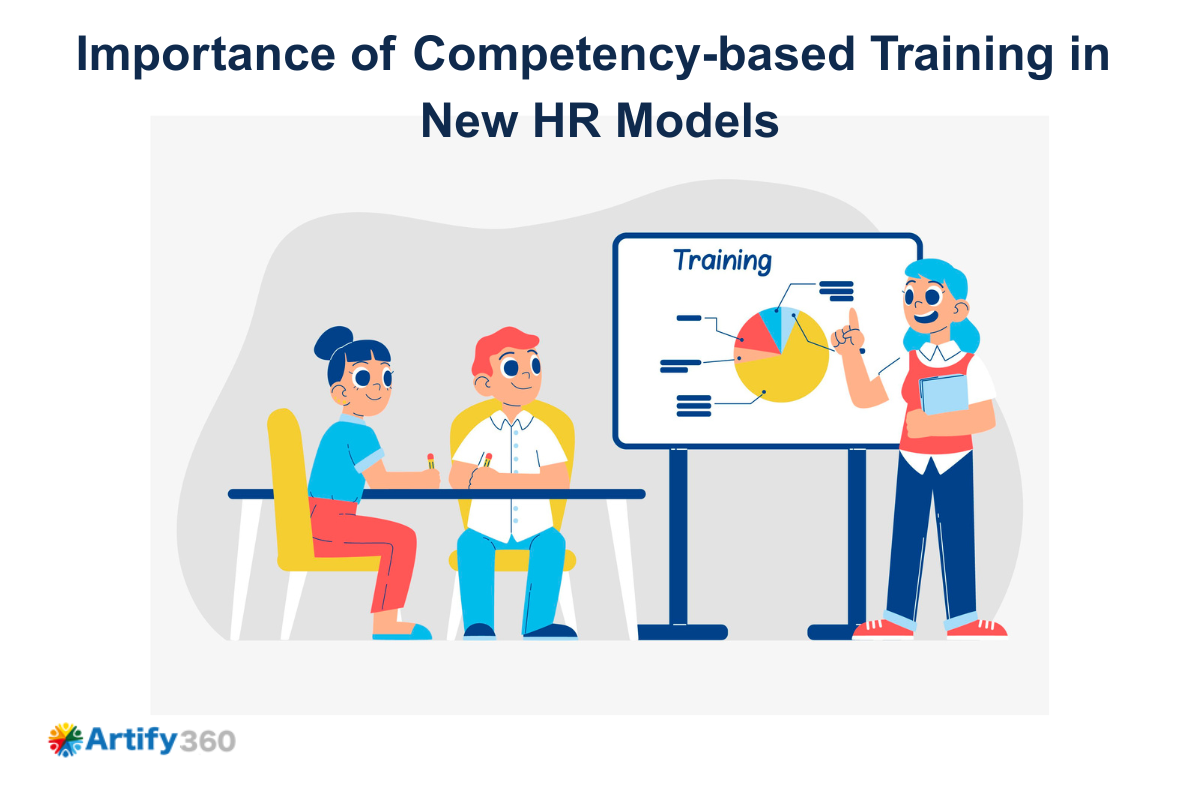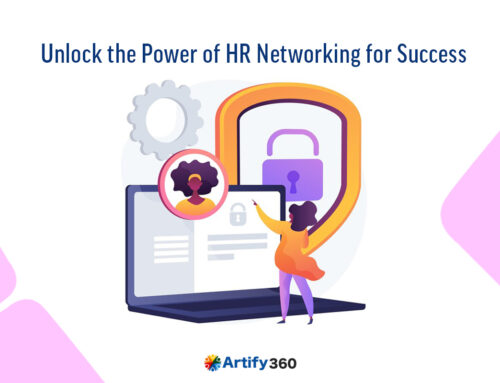Training and development of resources are pillars of an organization. If your operations model and structure should undergo a dynamic transformation in this category, the ideal solution is to go for an optimum HR process. It covers various employee engagement practices and core competencies in the operations management processes.
Of the different training or development programs that you can use, the ideal one is competency-based training. This concept stays in sync with the present trends and specific skill programs. This type of training program and approach helps you uncover the optimum tactics in the domain of employee-based competencies.
Our article intends to share the best views regarding the principles of competency-based training (CBT) for your organization. It helps you get optimum details on the domain’s various benefits, procedural steps, and top challenges to overcome.
We also share insights regarding the appropriate use of digital HR technology to implement CBT tactics. Hop in to get ideal insights regarding all these training model segments.
What is Competency-based Training?
When you deal with competency-based training models or programs, the ideal option is the demonstration of specific skills. It helps you grow adequately to help you perform and excel in the domain of HR operations. CBT is an active form of training and development module for engaging your human capital resources.
The major step in this model is to find an organizational fit for all your HR operations support programs. In any business model, the specific training should connect well with the job profiles and employee skills to facilitate optimum performance.
CBT gives ideal preferences to each employee in an organization. It helps you provide personalized training support to your employees without compromising the operational impact. You can go for a comprehensive training model in this case, where every employee’s skill set and employment features are considered.
The first step in delivering CBT options is to choose a traditional training model to add value to your core resource management program. It helps you add specific HR training support systems to add value to your organization’s operations process. The process measures your ability to function and evolve in a real-world environment and setup.
Apart from implementation strategies, you should pay attention to the inflow of results for this specific HR operations model with ease. Individual assessment for each task should be done extensively to manage the effectiveness of CBT in the business domain.
Principles of the CBT Program
When you follow a competency-based approach to build your specialized HR operations training and development, it helps all the elements of the organization. The main principles that can help manage CBT implementation in your business are:
Personalized learning options
One of the essential principles that can add value to your HR operations domain is the systematic use of personalized learning services. It could help your employees adapt well to their respective job profiles.
Practical applications
It is important to get effective ideas regarding the practical applications of HR operations in the training and development niche. You can go for the right solution in this case with the ideal help of the HRMS portal.
Progress assessment services
Your training portal should cover various services in the domain of HR progress assessment. It could open up significant opportunities to boost your employee training model.
Relevance of skills
The provision of skills and their timely management is an active channel to maintain value for your HR operations.
Well-defined outcome
Defining and executing an essential outcome is the most important factor that can add significant value to your employee training solutions. You can add it as part of a genuine training model.
Benefits of Competency-based Training
The scope and potential of competency-based employee training are huge. Studies show that only 1/5th of the organizations currently use this approach. It shows that the chances for building a credible and supportive platform model in this case are high.
Given below are some of the optimum benefits that add value to your organization from your CBT model:
Improves workforce efficiency
An important benefit that can add significant value to your HR operations model is the factor of workforce efficiency. You can get it from active resource training services.
Enhances employee solutions
The enhancement of employee solutions could prove to be a spontaneous feature that arises from the effective use of CBT integrations.
Promotes active participation in resources
When you offer customized training support to your human capital resources, it is feasible to generate value in the HR model with the active participation of employees.
Boosts skill assessment
The premium assessment of skills and talent of employees can be widely recognized and applied with the support of an apt training model.
Supports career functions
The right CBT application helps you focus readily on the career development of your employees. It can help you rise in the HR profiles and professional placements of an organization.
Prepares your employees
An ideal option that can help your employees is the preparedness they can show to meet their resource skills. The right technique to help you in this regard is active training solutions.
Steps of Integrating Competency-based Training in Businesses
The implementation of CBT in a business model includes various steps and procedural applications. The main steps are as follows:
Clear definition of competencies
An ideal step that can help your cause is the integrated application of core competencies in the training domain. It can aid you in promoting a substantial HR training model with ease.
Development of training materials
If you can develop efficient training materials and support system activities to engage and empower your employees, it is easier to build an ideal environment. This can be done with the help of core HR training operations.
Incorporation of flexible learning
An important step that you have to consider is the optimum allocation of flexible learning resources and solution aspects to maintain value for your business model support. It could be useful for your organization’s operations support in the long run.
Use of performance-based assessment
If you can go with a performance-based HR model, it could open up your core operations functions. This step could help you maintain value for your employee training parameters.
Measurement of employee progress
An integral step that you should adopt is the active and essential measurement of employee progress in an organizational context. It can help you manage and optimize the employee training and performance support systems.
Provision of feedback and review
If you can pave the way for optimal employee feedback and review support, it becomes possible to get a guided overview to meet the various training needs and demands.
Evaluation of training requirements
You should consistently evaluate the employee training requirements to receive potential value to your organization’s operations workflow model.
Consistent changes to the existing HR models
If you can make the necessary changes to your HR operations model, it could elevate your business process feasibly. The changes should be consistent and easy to understand.
Prediction and analysis of business outcomes
A final step that you should consider is the effective flow of business outcomes to get valuable support for your training predictions and performance analysis.
Core Challenges in the Domain of Competency-based Training
When you opt for CBT steps, it could present certain challenges and hassles. You should learn about those parameters to turn them into spectacular opportunities. Have a glance below:
Time and cost constraints
You might experience issues related to time and cost constraints in an organization. These could turn out to be bigger problems if they are not addressed in a training model.
Change-based problems
When you set out to change the organizational working parameters, it could cause trouble for your overall HR training model. This problem deserves attention from the outset to avoid hassles and operational objectives.
Complexity in performance evaluation
When you work with a performance-oriented HR model to get active support in the productivity norms, it possesses a set of unique challenges. You have to address these factors to deploy an essential training support program.
Customized training issues
You might face issues with the provision of custom training and development parameters for your human capital resources. These should be tackled with the appropriate integration of personal measures in the organization.
Trouble with scaling the process
If you can scale the HR process to meet innovations and operations practices, it helps with the business values of the firm. However, this step could present its own set of unique challenges.
Individual training troubles
A prominent challenge that you could face is the integration of personal training solutions for your employees. It could cause issues in the domain of HR practices and training models, owing to several factors.
Discover how Artify 360 Ensures the Implementation of Competency-based Training in Organizations
Once you are effectively part of the competency-based training model integrations, it helps you proceed in the domain of HR systems. If you can go for a CBT program with the help of cloud HR software services, it offers the best solutions. We present to you Artify 360 HR software to grow and succeed in this scenario.
When you have a digital technology platform or solution, the most important step is to go for a customized training model. It offers various options in the domain of training and development of employees. Artify HR payroll software contributes to unique and exclusive parameters in the domain of learning resource provisions.
You can reach out to us to get a demo session in the domain of employee training options. Our HR software systems expertise will be sufficient to add a unique value to your training model functions.






